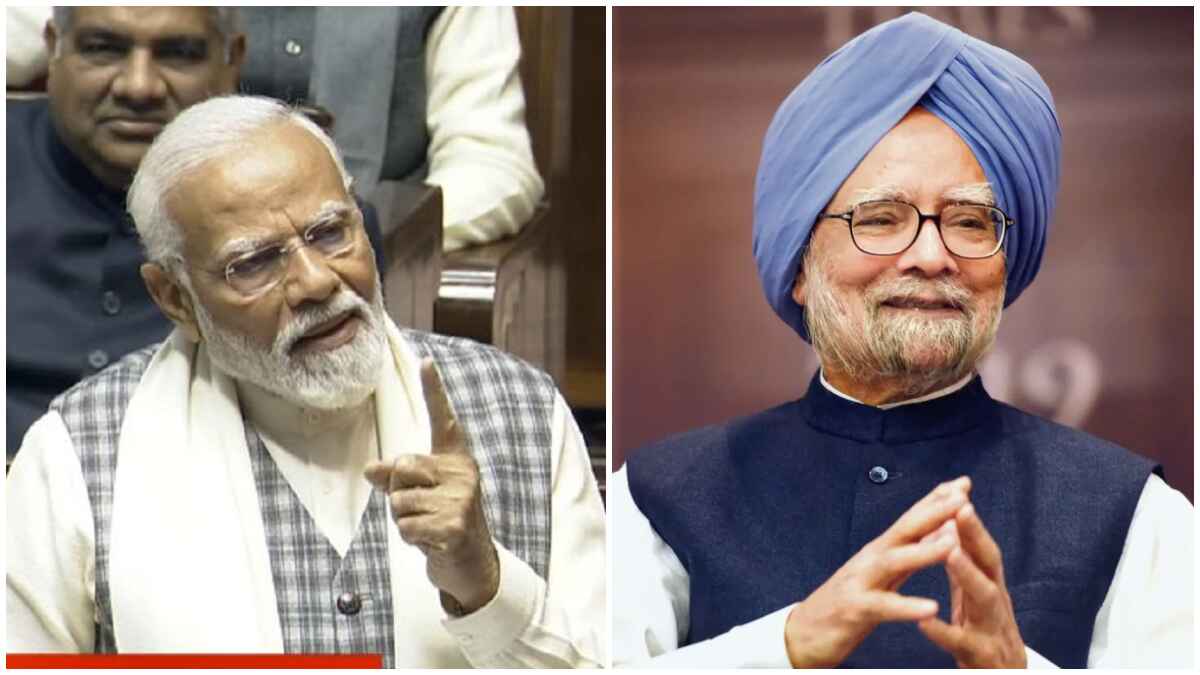11 Years of Decisive Leadership vs. Decades of Drift
In the annals of Indian democracy, few contrasts are as striking as that between the eleven-year administration of Prime Minister Narendra Modi and the decades-long rule of the Congress Party. Where one is marked by decisiveness, delivery, and disruption of the status quo politics, the other is remembered for inertia, inefficiency, and institutional decay.
This is not a partisan argument but an evidence-based comparison rooted in facts, focusing on three crucial pillars of governance: law and order, corruption control, and infrastructure development.

Law and Order: From Complicity to Control
Modi Era (2014–2025):
India, under Modi’s leadership, has seen a marked decline in the kind of large-scale communal violence that once defined the Congress era. Since 2014, there has been no nationwide communal conflagration akin to the 1984 anti-Sikh pogrom or the 1992 Mumbai riots. Instead, the Centre has acted swiftly against incitement and terrorism, with stronger coordination between states and the Home Ministry.
A case in point: Operation Black Forest, a surgical offensive on the Chhattisgarh–Telangana border in 2023, decimated Maoist strongholds. It demonstrated that law enforcement under Modi isn’t just reactive—it’s preventive, preemptive, and precise.
Congress Era:
Congress governments presided over some of India’s bloodiest riots—from the 1984 Sikh massacre (with ~3,000 killed) to Bhagalpur (1989), Mumbai (1992-93), Gujarat (1969, 1985), Assam (1983), and more. Accountability was largely absent. Victims’ families waited decades for justice. Political will to curb violence was often missing; worse, Congress leaders were repeatedly accused of either looking the other way or being complicit.
Corruption: From Scams to Systemic Cleansing
Modi Era:
In sharp contrast to its predecessor, the Modi government’s record on corruption at the central level is virtually spotless. In eleven years, no major scam has surfaced—a first in independent India. Modi’s administration has relied on systemic reforms rather than superficial crackdowns.
Key initiatives like Digital India, the JAM Trinity (Jan Dhan-Aadhaar-Mobile), Direct Benefit Transfer (DBT), and e-procurement platforms have curtailed leakages and eliminated middlemen. Government subsidies now reach beneficiaries directly, on time and unpilfered.
India’s ranking in Transparency International’s Corruption Perception Index has remained stable despite global headwinds—moving from 94 in 2013 to 93 in 2024—while many peer economies declined.

Congress Era:
The Congress years read like a laundry list of scams:
• 2G Spectrum Scam – ₹1.76 lakh crore loss (as per CAG)
• Coal Block Allocation Scam – ₹1.86 lakh crore
• Commonwealth Games Scam – ₹70,000 crore
• Bofors Scandal – ₹64 crore in kickbacks (1980s)
The Congress Party institutionalized corruption. Investigations were buried, whistleblowers were silenced, and accountability was a mirage. These scandals didn’t just rob the exchequer; they shattered public faith in governance.
Infrastructure: From Policy Paralysis to Performance Metrics
Modi Era:
Infrastructure has been the cornerstone of Modi’s governance model. In 2023 alone, India built an average of 37 km of national highways per day, compared to just 12 km/day during the UPA years.
The transformation of Indian Railways is visible. Over 15 Vande Bharat trains are operational, with dozens more under production. Station modernization is underway in 1,300+ locations.

Airport connectivity has exploded—148 functional airports in 2024, up from 74 in 2014. Metro networks now span over 1,000 km, compared to a mere 225 km in 2014.
Congress Era:
Despite decades in power, Congress left behind crumbling roads, ageing trains, and insufficient air and metro connectivity. Project delays, red tape, and lack of political will defined the infrastructure landscape. The so-called “India Shining” narrative rarely translates into ground reality for the common citizen.
While both regimes have indelibly shaped India’s trajectory, the contrast is undeniable. Modi’s governance has emphasized action over appeasement, technology over tokenism, and outcomes over optics. Congress, by contrast, often prioritized dynasty over delivery and narrative over numbers.
As India looks ahead, the lessons are clear: governance must be transparent, decisive, and development-driven. The voters have seen the difference. And history will, too.






